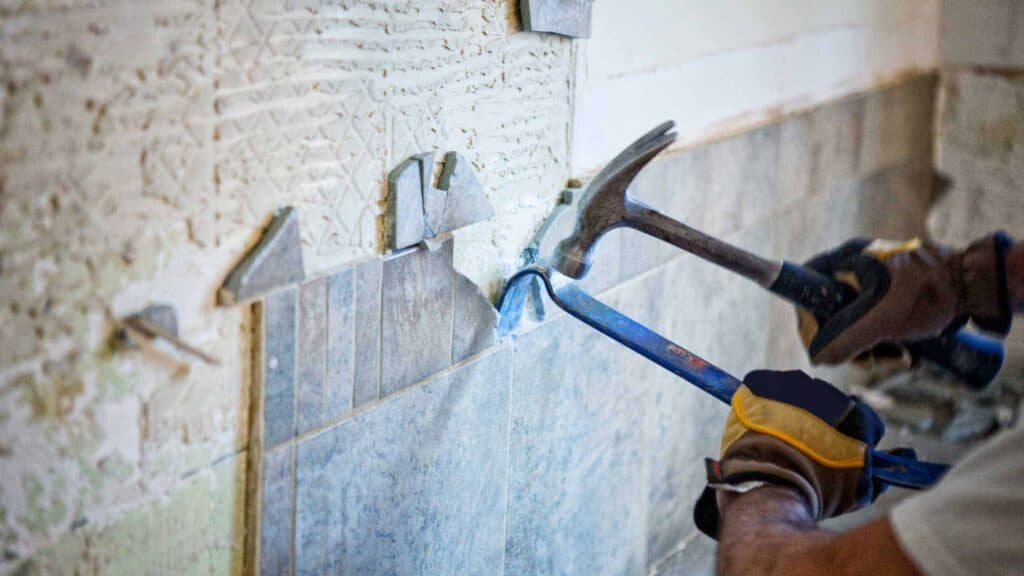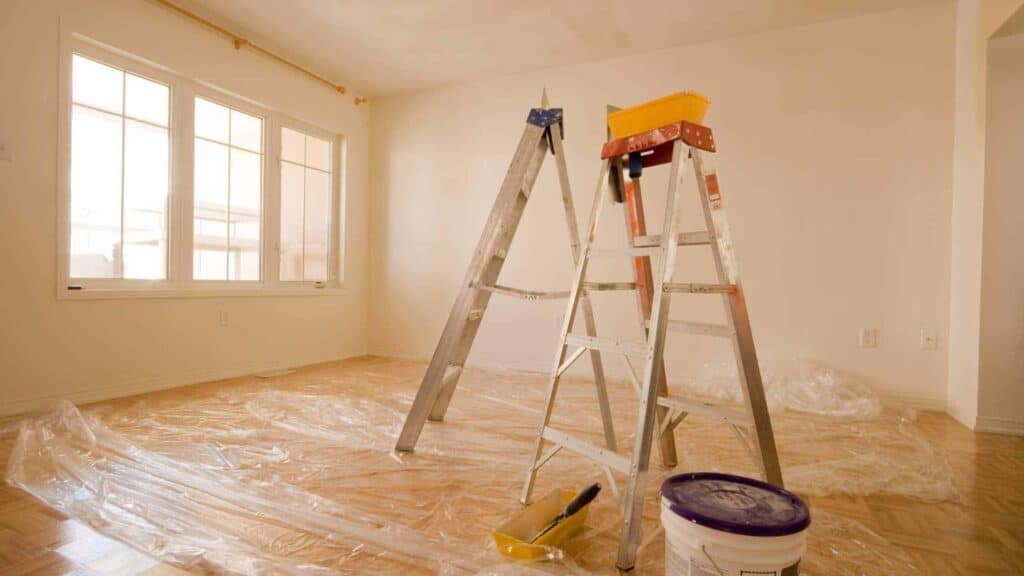It is critical to understand what type of work is involved when discussing home renovations. What exactly is a complete renovation, and why renovate your home? Should you renovate your entire home rather than just a few rooms?
We are aware that a home may require a complete makeover on numerous occasions. Whether you want to live in it, sell it, or rent it, it is the greatest option for keeping it in good condition.
Renovating your home can be an exciting and rewarding experience, but it can also be a significant undertaking. Before embarking on a comprehensive renovation project, it’s essential to carefully consider your options and weigh the pros and cons. From setting a budget to deciding which areas to renovate, there are many factors to consider.
In this article, we’ll provide you with a guide to comprehensive renovations, their advantages, and disadvantages, and help you decide whether to renovate or not!
When To Renovate Your Home
Before pulling out your tools or calling in the pros, think about every facet of the renovation project. Be sure you understand the costs involved, how long the job will take, and how it will affect the rest of your home while the work is being done.
Note that restoration work should be done by qualified specialists because it can require considerably more than a new coat of paint or altering a door latch or two. Attempting to do certain things on your own may end up costing you more money in the long run.
If you opt to perform the renovation yourself, remember to establish a balance between working on your home and your personal life. It’s all too easy for renovations to consume every weekend and the spare minute you have.
Not all renovations are created equal. When you ask yourself what complete remodeling entails, you must be clear on the scope of the task. We’re talking about completely rearranging or redesigning the majority of the house’s area and design. This type of refurbishment typically comprises a variety of tasks such as:
- Electrical installations
- Plumbing
- Gas and air conditioning
- Adjustments to all the room finishes
- External and interior woodwork
Partitions and even load-bearing walls can be adjusted in this form of comprehensive house renovation. Rehabilitation of slabs and alterations in the allocation of the house’s rooms are also possible. In general, all of the rooms have to be refurbished because it is vital to ensure that the finish of the entire house is of the same quality and avoids any distortion.
Pros And Cons Of Renovating A Home – Are Renovations Worth It?

Benefits Of Renovating – Why Renovate Your Home
There are numerous reasons to remodel your home:
Improve Your Quality Of Life
It enables you to have a home with the exact design and features that you choose. You get improved functionality, light, comfort, and streamlined areas.
Helps Improve Energy Efficiency
You may improve the distribution of air conditioning in your home to reduce electricity usage, make greater use of sunshine, and ensure better thermal insulation.
It Increases Its Market Value
You can revalue the property to raise its real estate value, allowing you to sell or rent it for a higher price.
Drawbacks Of Renovation
One significant disadvantage of renovating is that it is often not possible to entirely recuperate the expenditures of the project when selling the house. While a significant increase in space, such as an open plan renovation or an addition, may boost the property’s value, minor modifications do not always have the same impact.
In terms of rooms, a kitchen or bathroom makeover will frequently increase the value of your home more than, say, an office renovation.
Furthermore, there will be a lot of disruption at your property while the remodeling is going on. You must be prepared to live without a space such as a kitchen or a bathroom, as well as deal with the noise of the building.
How To Decide If Your Home Needs Renovation
A comprehensive renovation is a series of activities that allows you to improve all aspects of your property, from room layout to decoration. Everything is oriented to reach a specific goal, therefore it is not improvised but is part of the planning in which all of the house’s aspects are considered.
1. Changes In The Distribution Of The Rooms
Many people consider a thorough home makeover because they want to change various areas. This may necessitate the removal or construction of new partitions. Changes can range from connecting the kitchen and living room to adding a second bathroom, removing a bedroom to increase the living room, or dividing a large space in two.
The idea is to make your home more useful and comfortable and to enable each room to adapt to your needs more effectively.
2. Renovation Of Electrical Installations And Plumbing
The electrical and plumbing installations must be changed as part of a full makeover. Electrical wiring and plumbing in properties older than 20 years frequently need to be completely replaced. This form of restoration allows you to adapt your home to the needs of a modern property while saving money and ensuring security.
3. Insulation Of The House
A thorough makeover usually involves work to increase the house’s thermal and acoustic insulation. The goal is to improve your well-being by keeping the noise from outside the house from bothering you. Also, renovations might be used to reduce air conditioning expenditures.
This can be accomplished by putting new layers of insulating materials on the walls. You can use the house renovation to install modern air conditioning systems, such as aerothermal energy with underfloor heating, ducted air conditioning, and so on.
4. Interior And Exterior Carpentry
Exterior carpentry work such as shutters, windows, and glass, aluminum, PVC, and wood carpentry, as well as railings for the balcony or terrace, can all be included in a thorough restoration, with varied materials and qualities available.
It must also involve interior carpentry, which includes doors, baseboards, staircases, and maybe cabinetry work, whether it is custom-made cabinets or other forms of furniture. The goal is to ensure the practicality, beauty, and insulation of the home in order to achieve maximum comfort.
5. Selection Of Materials And Finishes
The finishes are the coatings that are put on an object and that will be present on the different surfaces after the refurbishment, offering a unique and special style in the decoration. The goal of choosing finishes is to create a certain impression and to be able to regulate the aesthetic aspect of the house.
To accomplish this, all of the materials and finishes for walls, floors, ceilings, enclosures, equipment, furniture, and so on must be harmoniously blended. Furthermore, the better the quality of the materials used, the longer the remodeling will last.
Where To Start Your Comprehensive Renovation

If you’re renovating or redecorating your home, prepare a list of what needs to be done so you can move through each room systematically and with minimal interruption to the rest of your family. Prioritize the work that has to be done based on what is most important, such as any plumbing or electrical work.
Remember, if you find any faults that may cause problems in the future, make them a priority. The order in which you do the work should also be considered. For example, you cannot plaster a room until all the electrical and plumbing work has been completed, and you cannot paint or decorate a room until it has been plastered.
Budget-Friendly Home Renovation Tips
Taking on a renovation project can be both demanding and rewarding. Take the following guidelines into consideration before beginning any job to ensure a smooth renovation.
Building Report
First and foremost, you should always hire a professional building surveyor to prepare a building report. This will reveal any hidden issues that are hard to find by a general inspection.
Budget
While creating your budget, be practical and plan for every contingency. This will show you whether the renovation work will add value to your home and whether it is worthwhile. Your best buddy will be a spreadsheet! Always set aside 10% of your budget for unanticipated setbacks along the road.
Work To Schedule
Create a timetable describing every job that needs to be completed from start to finish before beginning any renovation project. Your list should also include the cost of each part of your makeover. Finally, before beginning work on your home improvement project, consider the following planning checks:
- Planning permission
- Building regulations approval
- Listed building consent
Before beginning the project, you must ensure that all of the aforementioned items are in place.
Extensive home improvements can add value, functionality, and style, but they also necessitate careful planning and attention. You can make an informed decision about whether a renovation is an appropriate choice for you if you follow the recommendations and advice in this article.
To ensure great results, whether you choose to renovate or not, remember to prioritize your goals, set a realistic budget, and deal with trusted professionals.
